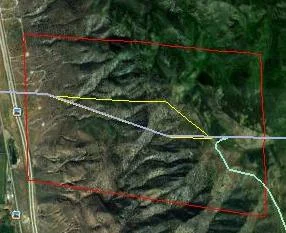Todays study is on eggs. Like yesterday, I was making breakfast this morning and I had two cut up chorizo’s in the pan cooking. My goal was to break 3 eggs in with them, scramble it up and top with cheddar cheese and then toss it in the oven to melt the cheese. Make one piece of toast to share with Sherry and add a glass of milk or orange juice to the table fare and enjoy.
As I was breaking the eggs into the pan with the ready to eat chorizo pieces, I thought…Bears Butt, you sure are a trusting guy to just break those eggs into that pan. What if they are not good eggs? What if the inspection process let one get past and it is contaminated with….whatever?
That got me thinking about the inspection process and off I went looking for how it is done. What I found is that most of the inspection work is done using computers and scanning equipment that lets very few ugly things get past. A person will periodically pick up one of the passed eggs and check it to make sure, but actually that person really isn’t doing a heck of a lot. So, rest assured the eggs you are going to break into your pan is over 99% sure to be a good one.
I also found out that chicken/egg farms with less than 3,000 laying hens do not get inspected as well as bigger farms….does that make you wonder where your eggs are coming from?
A long time ago I was at a USDA meeting with lots of cattlemen, farmers and assorted other people who grow or produce something we eat and one old boy about my age now came up and started to tell me a story. He said something like this…
You know lad, I’m a pretty big producer of beef cattle around these parts right now, I need to tell you that. But I wasn’t when I first started out. I came here thinking I could invest in a few cattle and suddenly I would be a rich man and I could expand each year until I had enough money I could sell out and go off and do what I really wanted to do, like fishing. My first exposure to the cattle industry went like this. I went into the bank and told the banker man what I wanted to do. I wanted to buy 300 head of beef cattle and raise them up and sell them to the people and make a ton of money. Then I’d buy 310 for the next year and do the same thing. Each year expanding until when I did sell them I’d have the money to sell the land and get out of here.
You know what the banker asked me? (My answer was no) He asked me “how many chickens are you going to raise”? Chickens! What do chickens have to do with beef cattle I asked him. He calmly asked me how on earth did I plan on feeding my cattle? And then went on to tell me I knew nothing about raising cattle and why on earth would the bank want to fund a guy raising beef cattle when he didn’t know anything about them.
Well this set me back a bit, he said. The banker told me to go do some study and maybe even visit some of the cattle guys in the area and then once I had it all figured out to come back and we would talk some more. And that is what I did.
What I found out from my visits to some of the larger cattle operations around these parts was that every one of them were raising chickens at the same time as the cattle. They were getting the eggs and selling them and making some pretty good money at that. But it cost them in chicken feed to keep them going and so most of them were having another guy operating the chicken side of things and footing the bill for raising them, but in trade they would get the fertilizer for free. The fertilizer from chickens is some of the hottest fertilizer around and so it goes a long ways when you spread it over the land to grow the feed needed for raising beef cattle.
You see, beef cattle have to eat too. And so, in order to raise 300 beef cattle for one or two years, before selling them, you have to feed them good high quality hay. Each one of the beef will eat 1/4 of a bale of hay each and every day. How many bales is that? A lot. And so I would need enough land to grow my alfalfa in order to raise those cattle. Around these parts we get two good cuttings of hay and one that is mostly filler, but that is how it goes. He said, I soon learned that I would have to have almost 4,000 chickens in order to fertilize the amount of land I needed just to grow the hay for my 300 beef cattle. And besides that I needed to buy 500 acres of good flat, irrigated land in order to raise my hay. Of course 500 acres is more than I would need for 300 beef cattle, but I had to start thinking ahead as my cattle business is going to grow. With that I would have to start thinking about expanding my chickens as well. More and more things kept coming into the equation. And he went on and on about all of that.
When I figured he had told me about everything he had to say I asked him about him selling out and going fishing. He looked funny at me and said, I’m broke! All my money is tied up in those beef cattle and chickens and more land and equipment to cut and bale the hay and feed all those animals! Nobody around these parts could ever think about buying me out. I’m here for the rest of my life….and he walked away.
That is a pretty long story to lead up to why I am writing this story. What I found in my investigation is THE ANSWER to the age old question of “Which came first, the chicken or the egg”?
What is the history of the egg?
“Eggs existed long before chickens,” according to On Food and Cooking: The Science and Lore of the Kitchen by Harold McGee. “The first eggs were released, fertilized, and hatched in the ocean. Around 250 million years ago, the earliest fully land-dwelling animals, the reptiles, developed a self-contained egg with a tough, leathery skin that prevented fatal water loss. The eggs of birds, animals that arose some 100 million years later, are a refined version of this reproductive adaptation to life on land. Eggs, then, are millions of years older than birds. Gallus domesticus, the chicken more or less as we know it, is only a scant 4 or 5 thousand years old.”
Take it for what it’s worth!
Bears Butt
Dec. 11, 2012


 Utah Fishing Reports
Utah Fishing Reports

